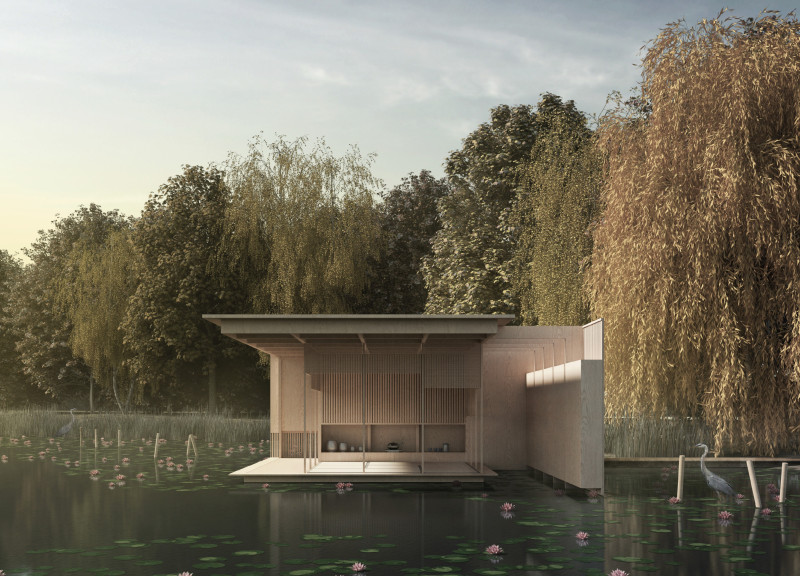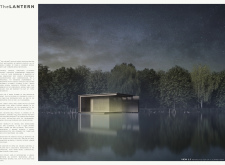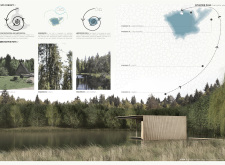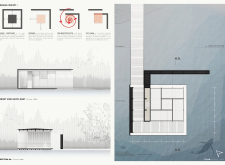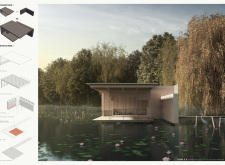5 key facts about this project
"The Lantern" is an architectural design located in the serene landscapes of Latvia, focusing on the theme of meditation. The project aims to create a peaceful setting where visitors can retreat and reflect. Constructed within a harmonious environment, it draws inspiration from Japanese gardens, traditional Lithuanian houses, and Scandinavian landscapes. The design features a pathway that takes users through distinct areas—a hamlet, a forest, and a lake—each contributing to a rich sensory experience.
Medidative Pathway
The meditative pathway is a key element of the design, represented by a spiral shape that symbolizes the journey into meditation. As visitors move along this path, they engage more deeply with the surrounding nature. Each section of the pathway offers a different ambiance, allowing people to experience various sights, sounds, and smells, enhancing their connection to the environment.
Central Cabin
At the core of the design is a cabin that serves as both a destination and the start of the meditative experience. The cabin features a thoughtful balance of openness and privacy, shielding visitors from outside distractions while encouraging them to connect with their surroundings. Inside, the cabin is divided into two main areas: one is dedicated to meditation, with dimensions reminiscent of traditional tatami, and the other serves as an alcove for tea preparation. This layout reflects the dual aspect of meditation as both a quiet practice and an active engagement with life.
Material Choice
Wood has been chosen as the primary construction material, reflecting its availability and sustainability in Latvia. This choice not only supports environmental considerations but also helps the cabin meld with its natural setting. The warmth of the wood adds a sensory layer to the experience, fostering a feeling of comfort and intimacy with the outdoors.
The design enables light to flow through the cabin, creating a lively atmosphere that changes throughout the day. Sunlight filters through well-placed openings, illuminating the areas while creating a sense of privacy. This interplay of light invites visitors to engage in quiet contemplation, enhancing their meditative experience while connecting them to the rhythm of nature.


